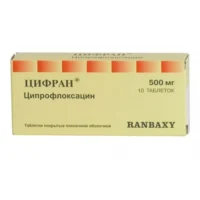Description
Sumamed (Azithromycin) Capsules 250 mg. №6
Ingredients
- Each capsule contains 250 mg of azithromycin.
Dosage
- The usual dosage is one capsule (250 mg) once a day for the prescribed duration.
Indications
- Sumamed capsules are indicated for the treatment of bacterial infections caused by susceptible strains.
Contraindications
- Do not use Sumamed if you are allergic to azithromycin or similar antibiotics.
Directions
- Take Sumamed capsules as directed by your healthcare provider. Swallow the capsule whole with a full glass of water.
Scientific Evidence
- Azithromycin, the active ingredient in Sumamed, has been extensively studied for its efficacy in treating various bacterial infections. Research published in the Journal of Antimicrobial Chemotherapy showed that azithromycin is highly effective against respiratory tract infections, skin and soft tissue infections, and sexually transmitted diseases.
Additional Information
- It is important to complete the full course of Sumamed as prescribed, even if you start to feel better before the treatment is finished. Stopping the medication prematurely can lead to the development of antibiotic-resistant bacteria.
- Sumamed works by inhibiting bacterial protein synthesis, thereby preventing the growth and spread of the infection in the body. It is well-tolerated and has a convenient once-daily dosing regimen, making it a preferred choice for many healthcare providers.





